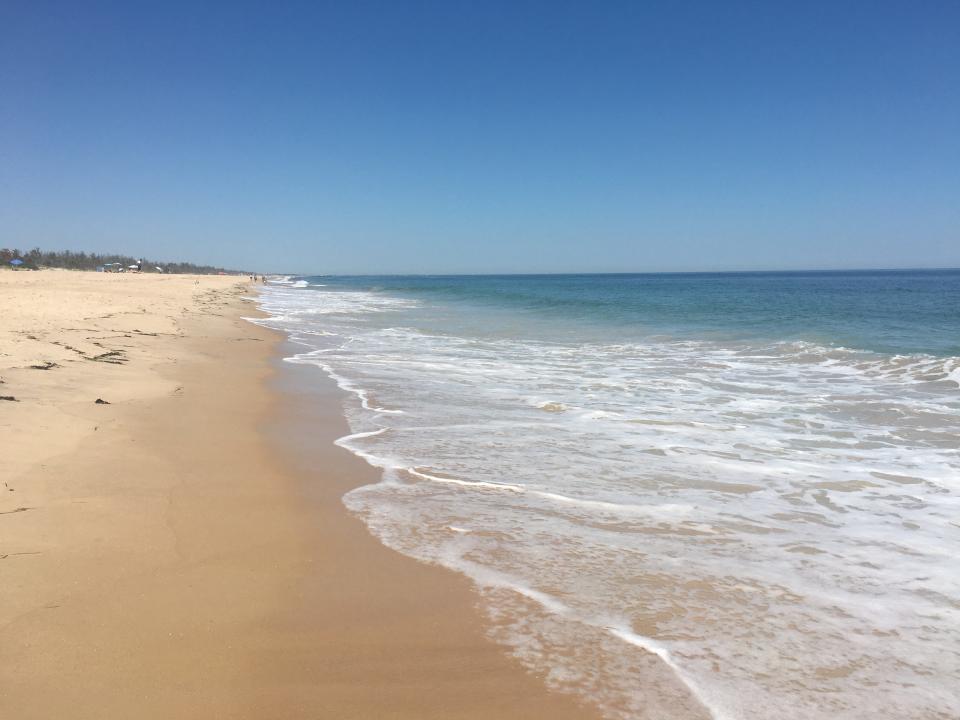Rhode Island's beaches are public. Here's a quick guide to what you can and can't do.
Unlike states where beaches and beach access can be made private, Rhode Islanders enjoy a right to the shore that is enshrined in the state’s constitution.
That beach access expanded significantly last year with the passage of a sweeping bill to give the public even more room on the state’s sandy and rocky beaches.
If you’re visiting Rhode Island this summer, or you’re a longtime Rhode Islander wondering what you can and can’t do on the beach now, here’s your quick guide.
For a more comprehensive overview, click here
Are all Rhode Island beaches public?
Short answer: Yes, parts of all rocky or sandy beaches in Rhode Island are open to the public.
Some beaches may be owned by an individual, business or private club, but the public still has access to parts of that beach.
But: You can’t cross private property to get there. And you can’t climb on a seawall or over someone’s deck if there’s no beach.
What parts of Rhode Island beaches are public?
Short answer: From 10 feet above the recognizable high tide line all the way down to the water.
In other words: If you’re standing at the recognizable high tide line, you can walk 10 feet toward "land" or the vegetation line (if the beach extends that far; if not, the vegetation line is your limit) and all the way down to, and into, the water.

What is the 'recognizable high tide line' on a beach?
Short answer: It's the line where seaweed and other debris naturally gather on the beach.
What if there’s more than one line?: Then the line closest to the water is your guide.
What if there’s no high tide or seaweed line?: Then you use the line where wet sand meets dry sand as your guide.
What if there’s a storm or storm surge?: Storm surges and other times when water is unusually high because of a storm do not count in the “seaweed plus 10” rule.
What about king tides or high spring tides?: The law is a little unclear on this one, but considering these are regular, naturally occurring tides, a high tide line created by a king tide should count – though be aware that you can’t cross onto private property or use private amenities, even if they are within the “seaweed plus 10” zone.
What can I do on the beach in Rhode Island?
Short answer: Everything you could do on public beaches before, including:
Walk along the public, passable part of the shore
Fish from the public part of the shore
Swim from the public part of the shore
Gather seaweed along the public part of the shore
Collect shells or rocks from the public part of the shore
Can I set up a blanket or chair on the public part of the beach in front of someone’s house/private property?: The law is, admittedly, unclear here.
The law says the public has a right to the shore "including but not limited to fishing from the shore, the gathering of seaweed, leaving the shore to swim in the sea and passage along the shore."
Rolling out a blanket or towel and sunbathing or reading isn’t fishing, gathering seaweed, swimming or walking through.
One could argue that “including but not limited to” would encompass sunbathing or reading a book. And if you’re wearing a bathing suit, you could eventually swim and maybe just haven't done so yet.
Michael Woods, chair of the New England chapter of Backcountry Hunters & Anglers, recommended in a previous Journal article, that, in this case, it’s probably best to buy a cheap fishing pole and have it with you if you’re going to post up in front of private property. That way you at least could fish from shore, even if you aren’t actively doing it.
Can I set up a tent, play music from a stereo, or have a party?
The law doesn’t specifically call these activities out, but these and other more disruptive activities probably trend further away from the “privileges of the shore” included in the Rhode Island Constitution, so it's probably best not to.
What can’t I do on the beach in Rhode Island?
Short answer: Everything you couldn’t do on public beaches before, plus some others, including:
Walk across private property to get to the beach
Go into people’s yards, onto their decks, in their driveways, under their cabanas, sit in their beach chairs or use other private amenities, even if they fall inside the “seaweed plus 10” line
Climb on a legal, permitted seawall if there is no beach
Climb over someone’s deck if there’s no passable shore to go around
Have a bonfire on the beach where it’s prohibited by town ordinance
What if there is a "Private Property" sign on the beach?
Short answer: You can still use the public part of the beach, but if you’re worried, it may be best to check with police first to be sure.
Long answer: "Private Property" or "Members Only" signs can be misleading – or they may have been placed there before the new law was enacted and were never taken down. And, in some cases, there are parts of that beach that are private property or reserved for members of a private club. In that case, the public is restricted to the “seaweed plus 10” zone.
Providence Journal reporter Antonia Farzan contributed to this report.
This article originally appeared on The Providence Journal: Are Rhode Island's beaches public? Here's how to know, and what you can do on them
